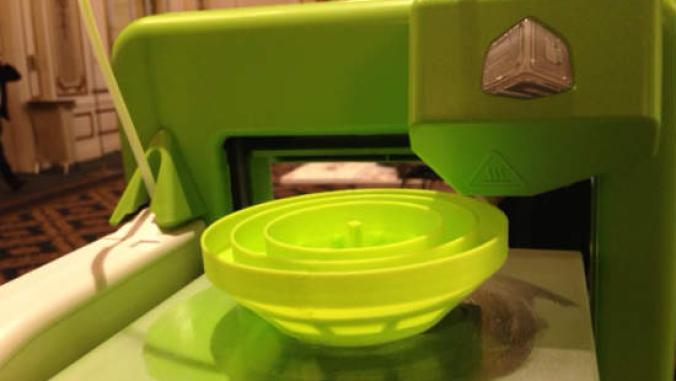Why Every Company Should Examine Its Trash
<p>In a little over a year, a Caterpillar plant increased its monthly recycling rate from 30 percent to more than 80 percent through a partnership with Waste Management, making recycling more accessible to employees and collecting more materials.</p>

Landfill - CC license by Flickr user D'Arcy Norman
In a little over a year, a Caterpillar plant increased its monthly recycling rate from 30 percent to more than 80 percent through a partnership with Waste Management, making recycling more accessible to employees and collecting more materials.
The two companies explained the benefits of running facilities with a zero-waste mindset and how to work towards zero waste in a GreenBiz.com webcast yesterday, "Getting to Zero: How Companies Profit From Eliminating Waste," moderated by GreenBiz.com Executive Editor Joel Makower.
Caterpillar's Aurora, Ill., plant makes large construction vehicles like excavators and front shovels in its 4 million square feet of manufacturing space, said the plant's general manager, Jim Blass.
Last year, the plant recycled more than 73 percent of its waste (about 13.9 million pounds of material), a vast improvement over previous years, made possible by going after more recycling streams.
While the company always did well with recycling steel and solvents, Blass said, it started going after almost all other recyclable wastes it created. Through working with Waste Management, the plant started collecting scrap wood, installed a conveyor for sorting waste on-site and implemented recycling along assembly lines.
Three months after starting assembly line recycling, the plant was diverting 40 percent of the line trash steam to be recycled, which worked out to be 200 tons per year, saving the company more than $200,000 a year. The plant is now aiming for a 75 percent diversion rate for 2010.
"Obviously if you can sort it right at the source, that's the most efficient way," Blass said. The plant now recycles scrap metal, concrete, cardboard, plastic, paper, sludge, light bulbs and plenty more materials, even the gloves workers wear when working on assembly lines. The plant also installed Greenopolis recycling kiosks, solar-powered compacting recycling bins and food digesters for all employees to use.
Although recycling more materials is an important part of handling trash, Waste Management's director of sustainability services, Jim Hall, explained that recycling is just one step on the zero waste journey. Many concepts of what "zero waste" is exist, and Hall described zero waste as a "cultural framework within an organization, a mindset" that has the ultimate goal of finding the most sustainable end-of-life option for materials.
Businesses can integrate zero waste thinking into resource consumption, the production of non-product and product outputs and the end-of-life output (what customers end up with having to dispose of). And within each stage for a material, a company should assess what solutions are possible, and which are the best choices, whether its landfilled, incinerated in a waste-to-energy plant, recycled, reused, reduced or eliminated.
"If you eliminate waste streams altogether, it's going to reduce your costs and there are opportunities to generate new revenue streams where they didn't exist before," Hall said.
For companies trying to recycle or reduce as much as possible, what it comes down to is taking a look at waste, material-by-material, and figuring out how much waste you're producing, determine what can be done with it and picking a solution.
Hall cautions that getting to zero waste might start off simple, but can quickly get more difficult. "Typically what happens is the first 80 percent is the easiest portion to deal with," he said. Dealing with that last 20 percent generally involved working with suppliers and other partners to implement alternative packaging and different materials.
As Makower said, “It can be done, but it takes a village.”
Landfill - CC license by Flickr user D'Arcy Norman





